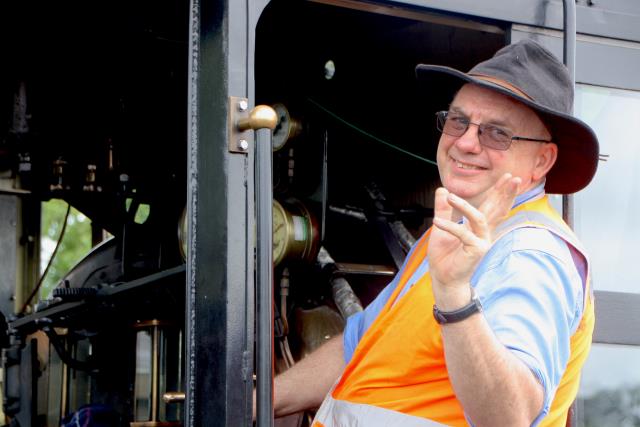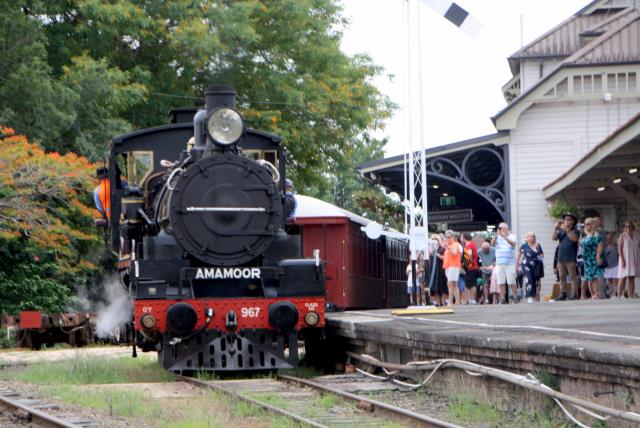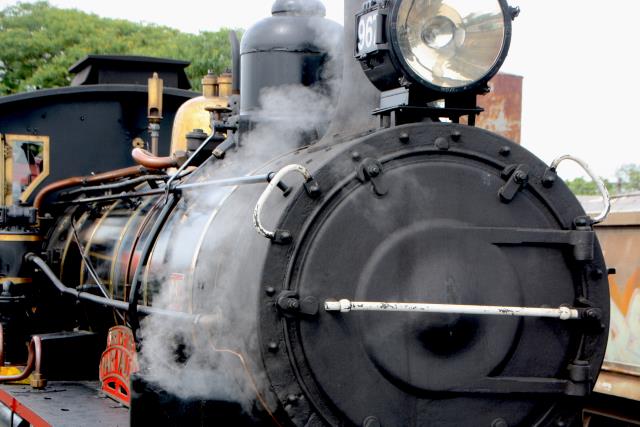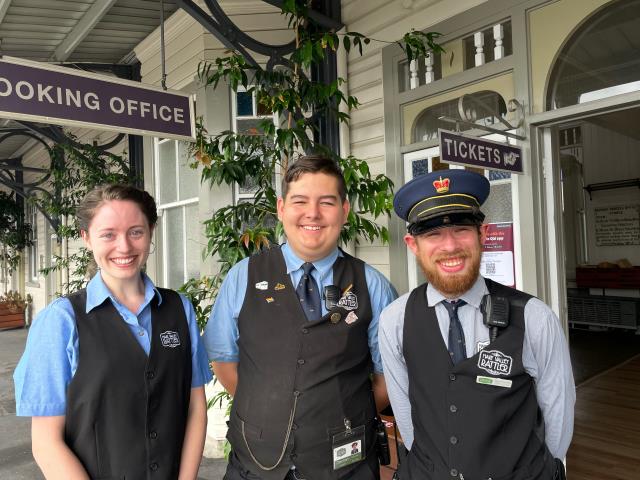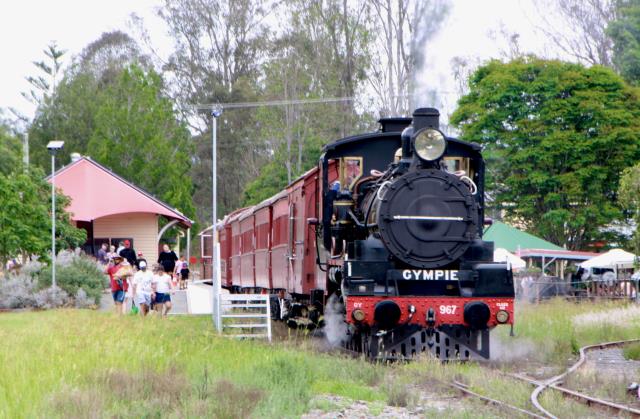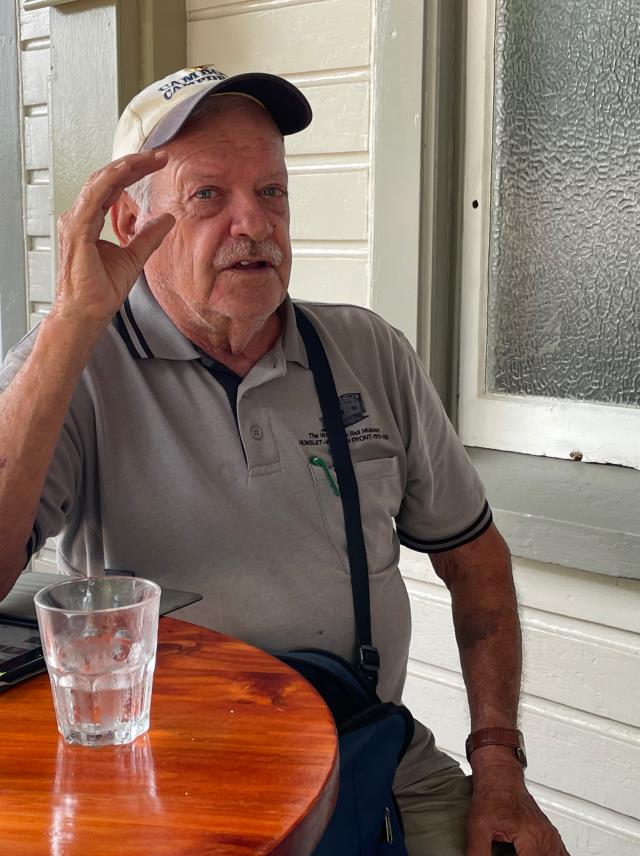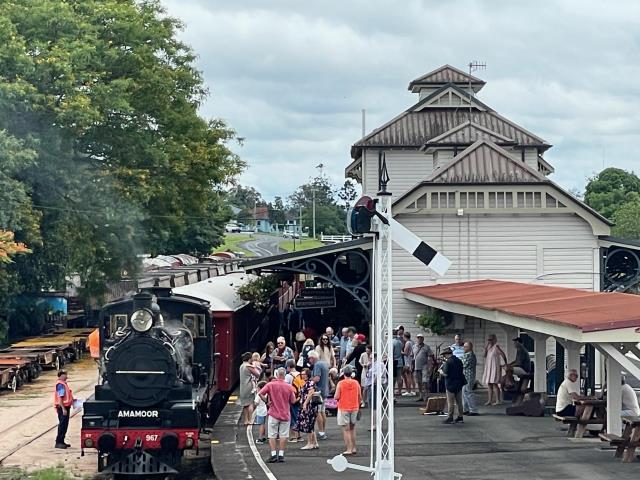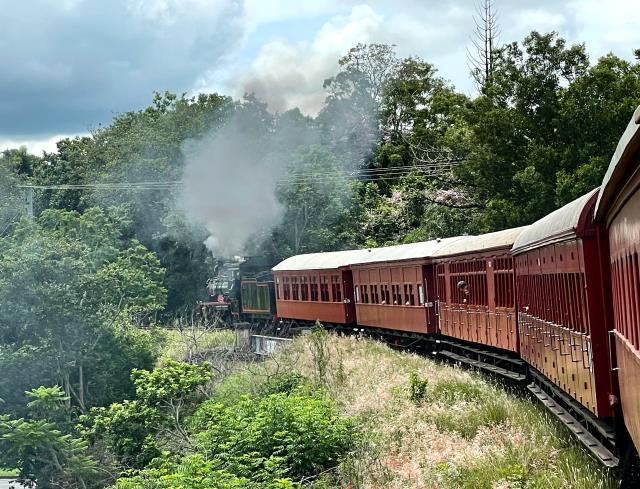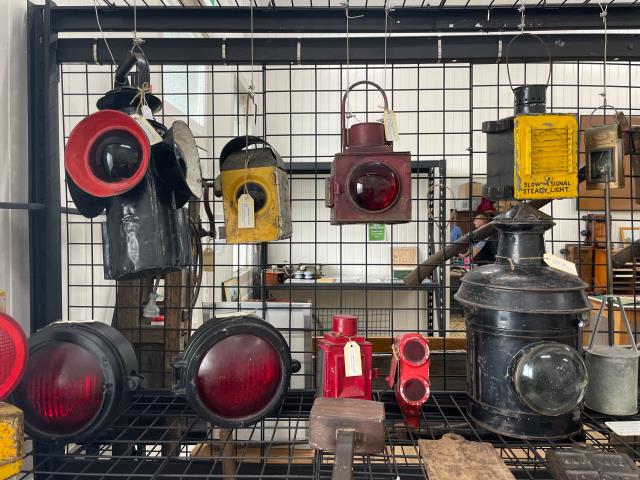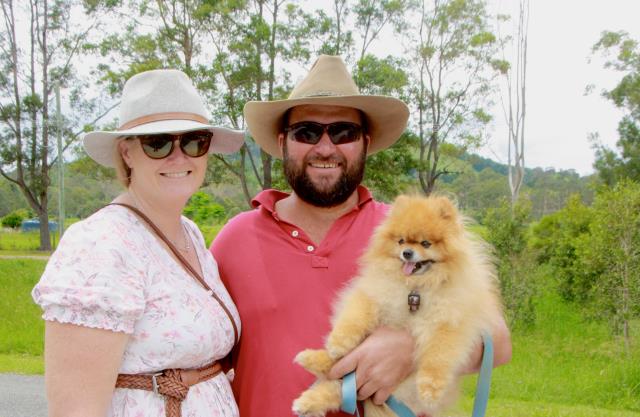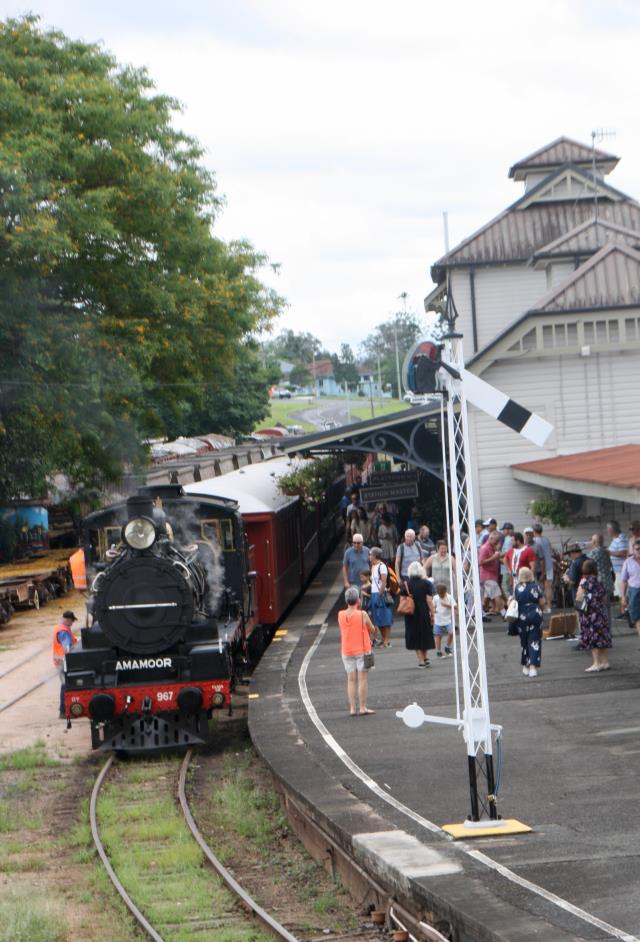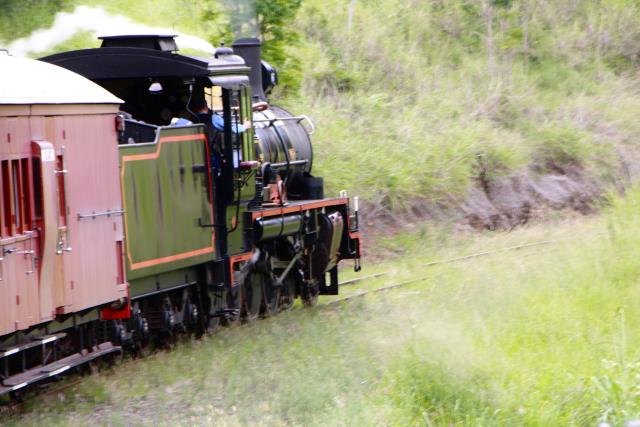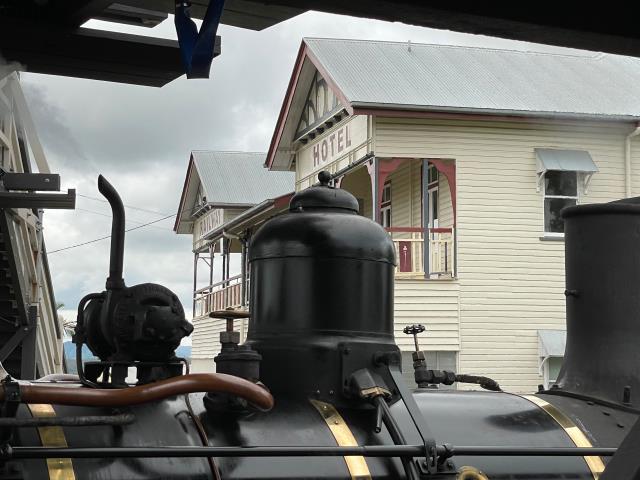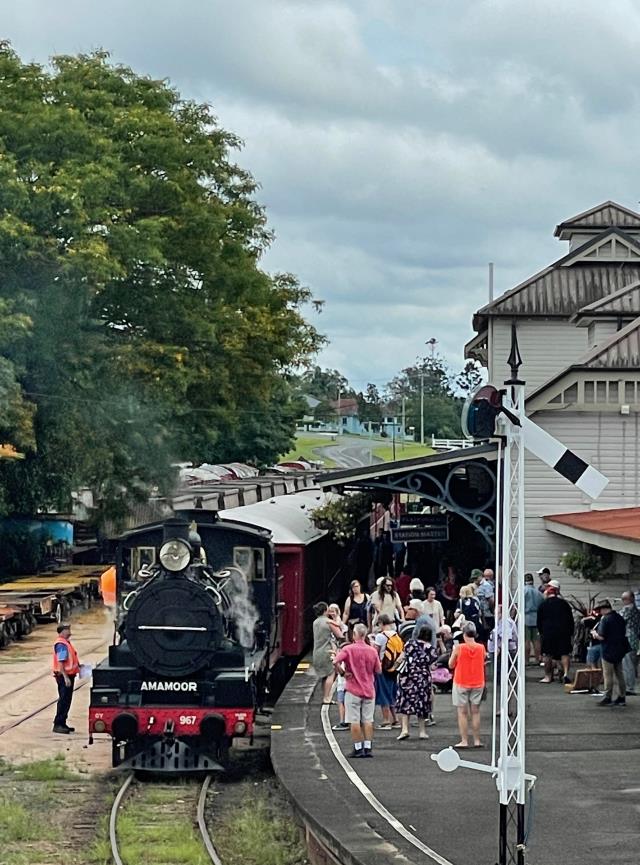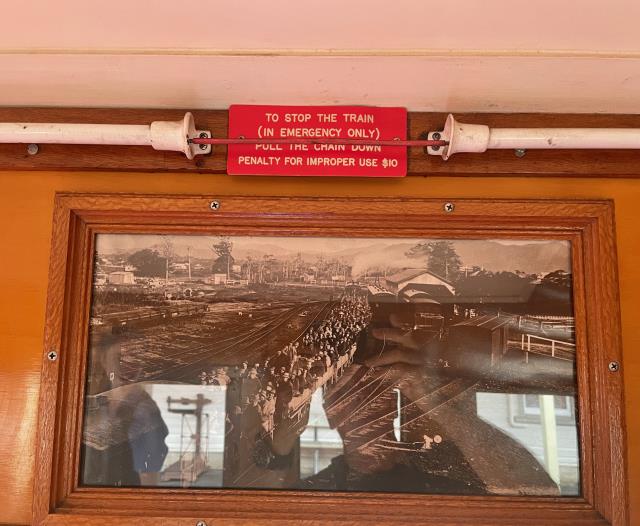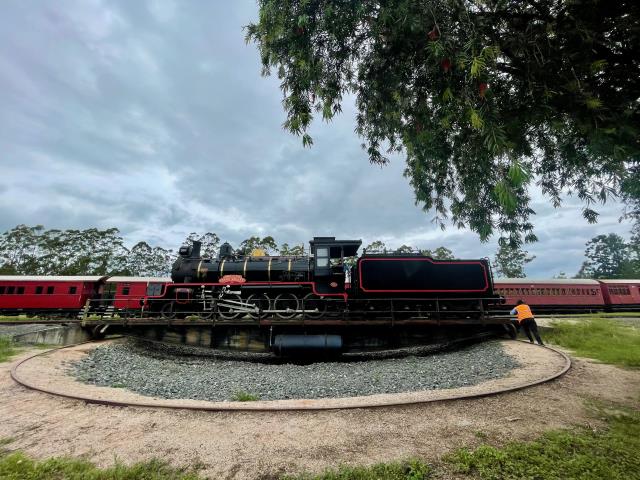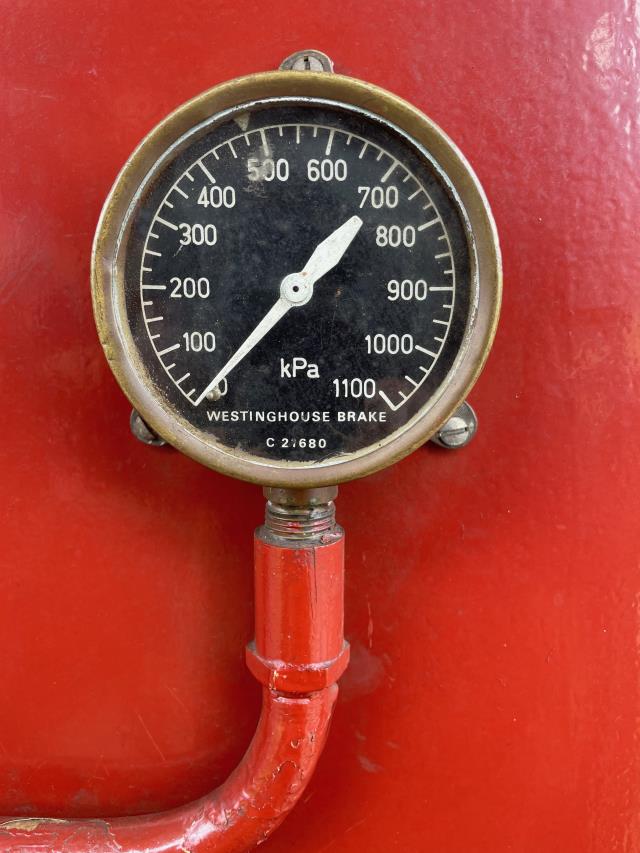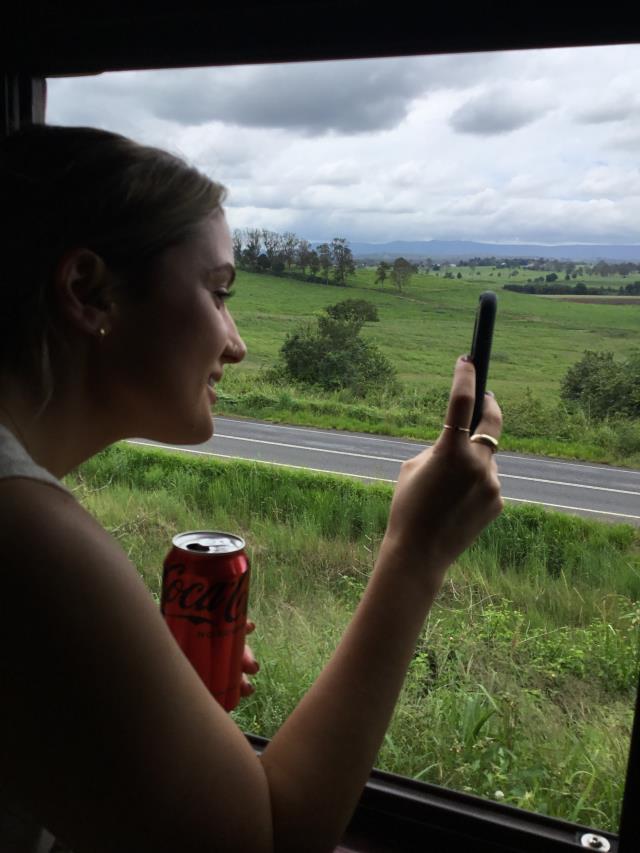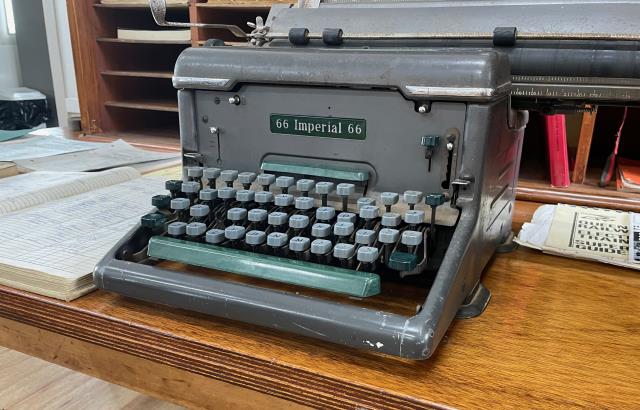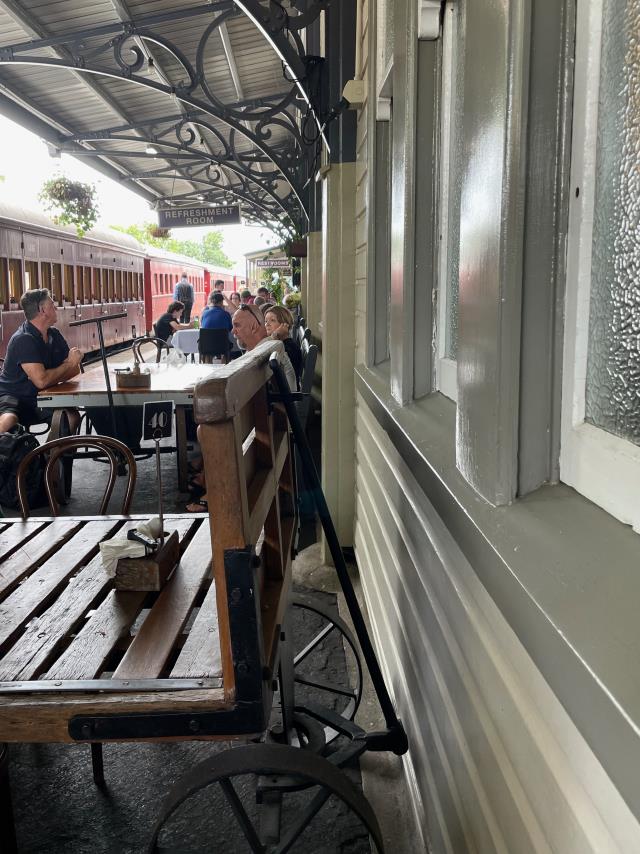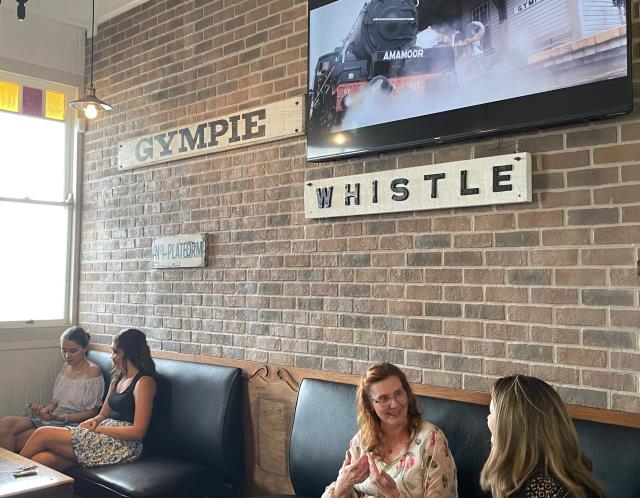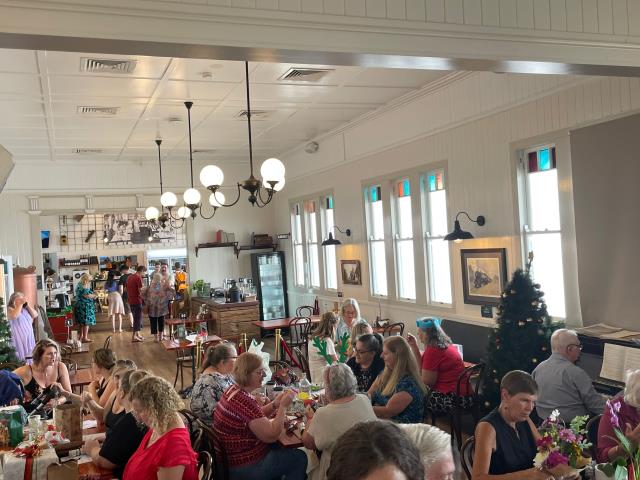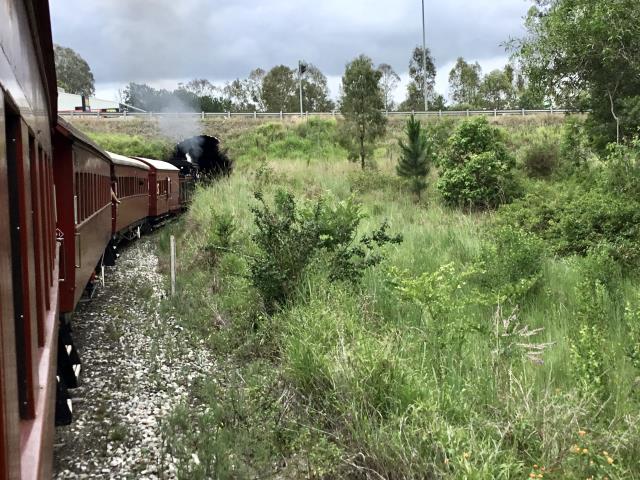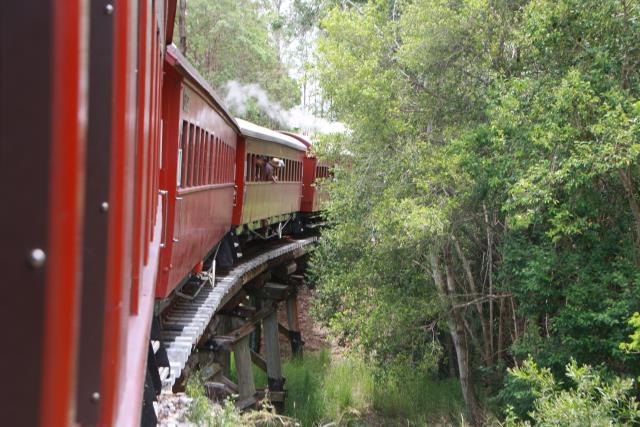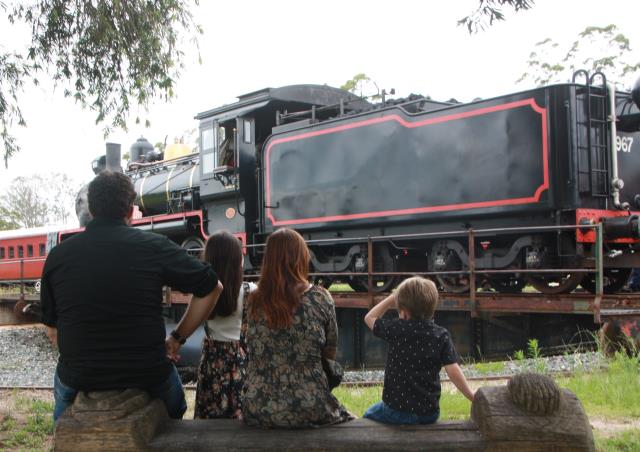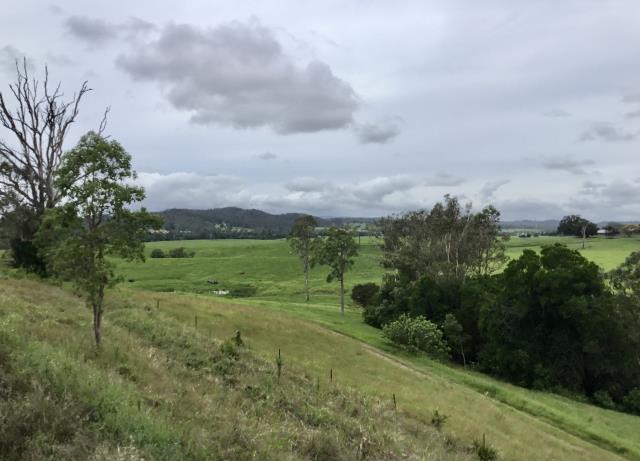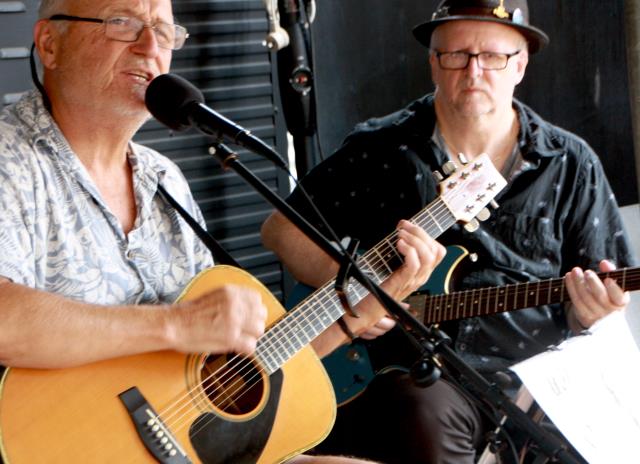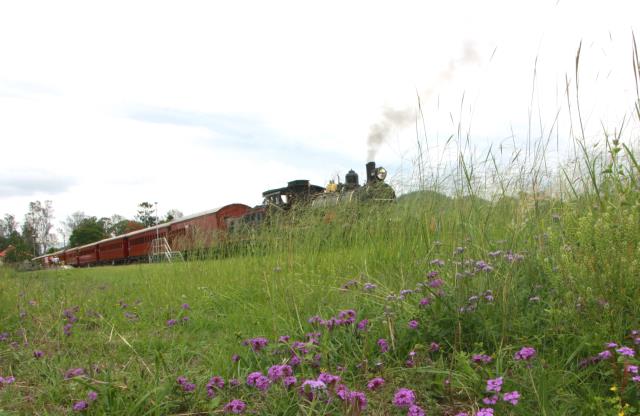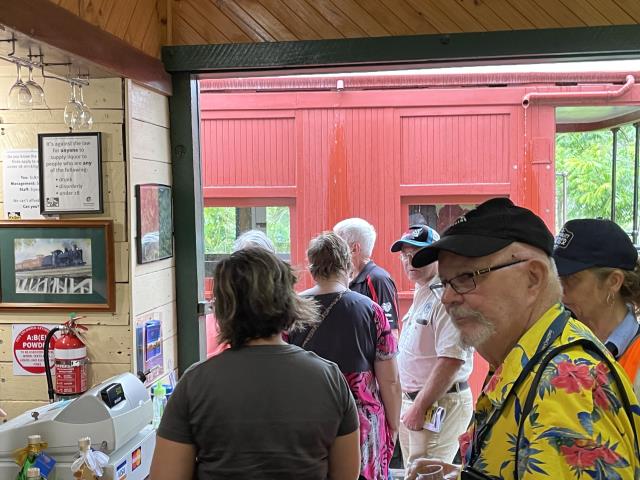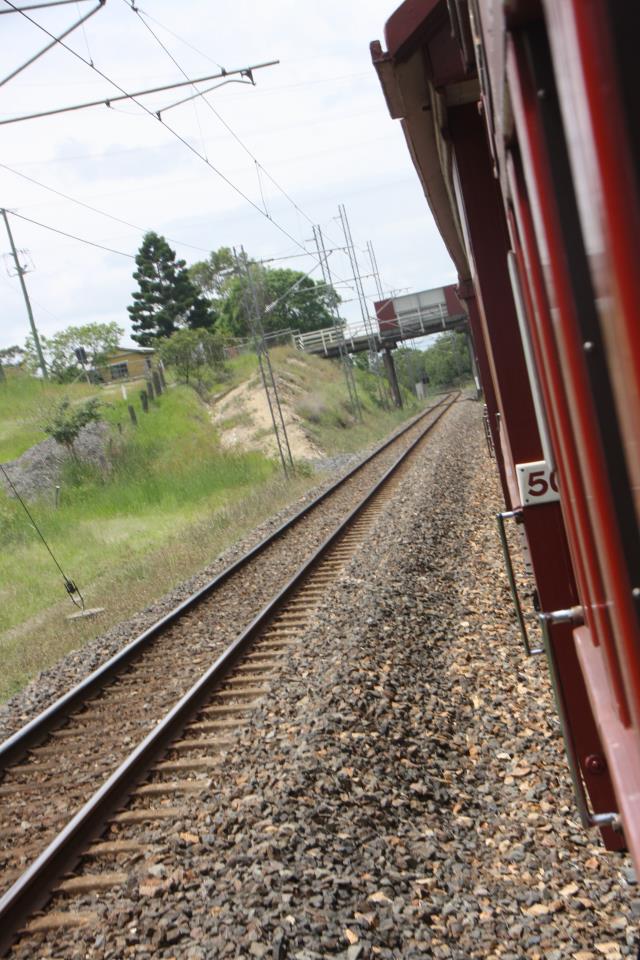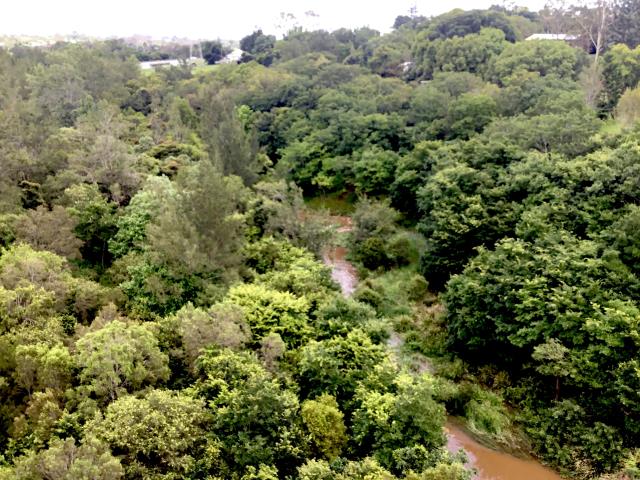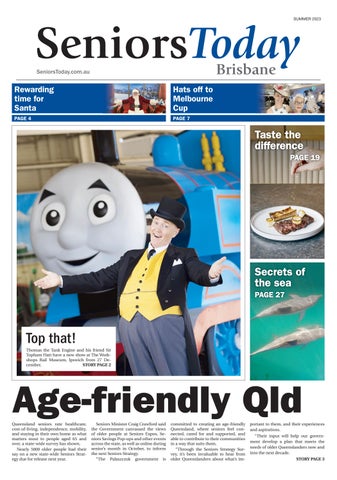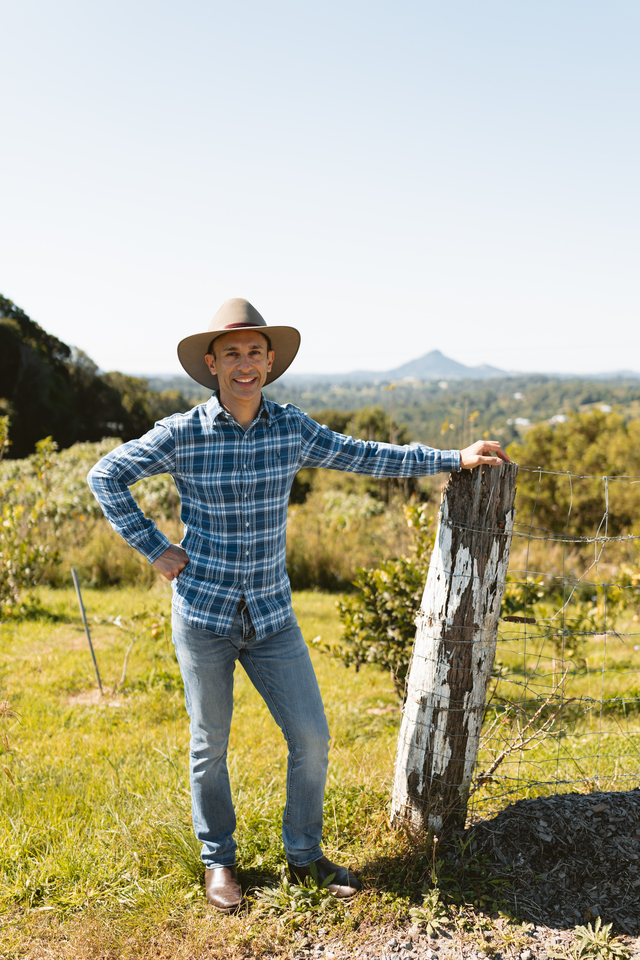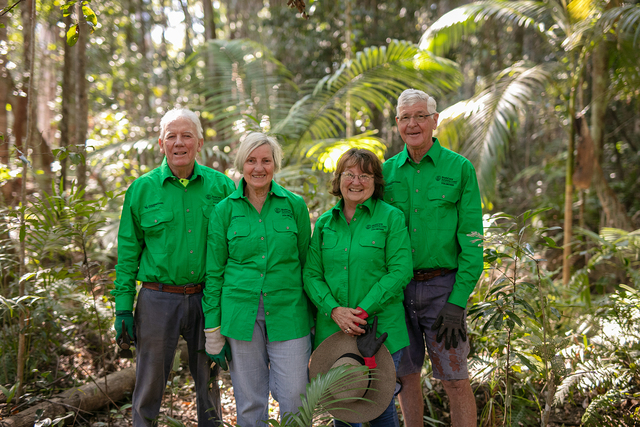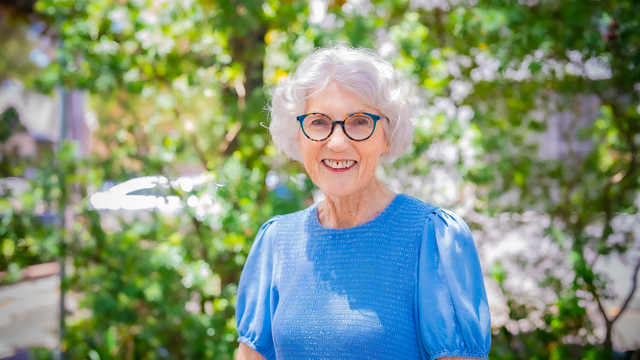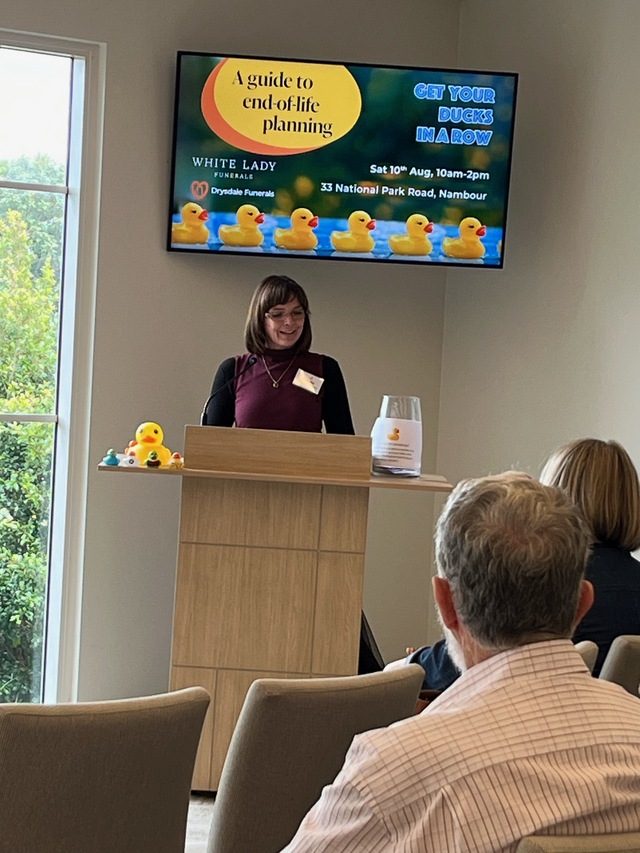PRECEDE
Gympie’s rich railway history a valuable asset for today, as well as into the future, as ERLE LEVEY discovered.
BREAKOUT QUOTE
“The river played an important part in the transportation of the timber down the river to where it could be used or exported. The river, today, reflects the land use changes that have occurred in its catchment. “
I didn’t expect it to be such an interesting journey.
History is a matter of taking lessons from the past, telling them today, for the benefit of the future.
Gympie’s railway history is a valuable asset for today and the journey ahead.
It leads you through the rich history of the area, puts it into a modern context and gives clues to the shape of things to come.
That is why I was in the car park of the old Gympie Railway Station in Tozer St early last Saturday.
The Mary Valley Rattler is back on track … and we had a ticket booked to experience again the charm of steam travel.
As the carriages are shunted into place at the platform the sense of excitement and expectation builds.
It took me back to train journeys of my childhood. To holidays with uncles and aunties at their farms.
To take the train into the city to see the Christmas lights and the department store windows – to hand your letter to Santa Claus.
Snapping back to the present, it’s important to remember that on an adventure such as this you don’t want to be rushing. Instead, relax, take it easy, step back in time.
Once on the platform of the historic railway station there’s time to talk to some of the Valley Rattler crew, also to enjoy breakfast or a tea, a coffee.
The Rattler is a not-for-profit organisation ensuring the public has access to a historic rail experience.
It operates with assistance from a large group of volunteers and is administered by a voluntary board.
Just recently the group was awarded gold at the Queensland Tourism Awards for Outstanding Contribution by a Volunteer or Volunteer Group.
Officer in charge of the train on the day Tanis Fulcher’s involvement with the Rattler started a couple of years ago but he has “trained’’ since he was about four or five years old.
“It’s a great place to volunteer,’’ he said.
“You make a lot of good friends.
“I enjoy this chance of playing trains.
“My grandfather was in the Royal Australian Air Force and came through here by train in the Second World War.
“Then in 1997 he took me on my first steam train trip. That was from Brisbane to Toowoomba.
“From then on I was hooked.
“This is good work and what you get out of it is just that sense of fulfilment.’’
Emma Allen, who was to be in charge of our carriage for the day, found it hard to contain her excitement about her role – providing information about the journey and ensuring the safety and welfare of those on board.
“I like trains,’’ she said. “Trains and history.
“I think it’s a great social space and you get to meet a lot of great people.’’
Emma’s brother George started off with the Rattler right at the beginning.
“When I got home and got to hear more about what he did, it really piqued my interest.
“My whole family have loved to train.
“When George was on the train my family used to go chase the train from Gympie to the other stations.
“I just wanted to be a part of that and ended up becoming involved on Halloween.’’
And, yes, Emma agrees, it helps having been a huge Harry Potter fan and the way trains are involved in the book series.
Indeed, there is a sense of magic as the 80-tonne steam engine moves into place at the head of the train.
A living creature breathing fire and smoke as it prepares to pull the 290-tonne train through the Mary Valley, out to Amamoor and back.
The trees at the station are dropping their blossoms onto empty goods carriages – like a fall of golden snow.
I speak with another passenger for the day, Roger Pilling from the Brisbane suburb of Runcorn.
He had made the two-hours drive to have breakfast and catch the train.
For him, train travel means freedom.
“The freedom to go where you want to.
“You can go on a walk around on the train. Not just sit in one spot.
“You get to see the countryside at a sedate pace.’’
That reminded me of a journey I once took on the Ghan – the old Ghan that ran from Pt Augusta to Alice Springs on a narrow gauge railway line.
Then there was the rock and roll of the train as it heads from Emerald to Longreach.
“I’ve just come back from Longreach,’’ Roger said. “And from Cairns. Just think, 24 hours on the train with that experience.’’
Gympie is regarded as the largest timber railway building in Queensland and one of the most stylish and elaborate.
Plans for the Maryborough to Gympie railway line started in the late 1860’s, after the discovery of gold.
Maryborough was the nearest port and there was no railway connection between Brisbane and Gympie until 1891.
History is right there in front of you.
Not only that, the Railway Hotel is opposite and I remember stories of the way the hotel staff used to drop food parcels from the footbridge into the open carriages below for the troops heading north in World War II.
As the train eases out of the station you are reminded of the smell of the smoke and soot from the engine.
Then there is the meeting of time as the historic steam train passes the contemporary street art and graffiti on buildings and goods carriages.
You are also surprised at the lovely relaxed feel as the carriages glide through the old gold mining suburbs of Red Hill and Monkland.
Historic photos of the railway line being built adorn the walls of the carriages, as well as copies of old newspaper clippings detailing the growth of the region – right from the time it was known as Nashville in honour of the founder of gold, James Nash.
Our carriage was built in 1910 and served on the Kuranda line, north of Cairns, for some time.
“No way!’’ a colleague exclaims. “I’ve probably been in it.
“I have been on that Kuranda train several times – as a child when I lived in Cairns and later as an adult.’’
We pass over Deep Creek, the bridge is 33m above the water where fossicking for gold is still carried out.
Then we are running near the main North Coast line from Brisbane to Cairns.
This stretch carries Australia’s fastest train, which travels at more than 200kmh, and here we are travelling at a very sedate pace.
There’s a carriage called Elvis … because of the way it rocks and rolls. I suppose there could be another one … Rattle and Hum, after the U2 album title.
Once out in the country you realise how much fresh air there is from the open windows.
You get the smoke and some specs of soot … but it’s the fresh air that gets you.
That and the beautiful timber work inside the carriages.
At Lagoon Pocket siding there is a staff change – not of the train staff but the one handed from one train to the station master to show the line is clear ahead.
It is then handed back to the next train going up the line. It’s a far cry from the electronic track and train management of today.
You cannot help but be taken by the exceptionally good scenery through Kybong, Lagoon Pocket, Dagun and Gilldora, which was known as Haystack Flats in the early days due to the amount of farming carried out there.
The Mary River stretches from the Bellthorpe-Maleny region in the south and flows north entering the Great Sandy Strait at River Heads, north-east of Maryborough.
Before Europeans ventured into the region a very large population of Aborigines occupied the area.
In May 1842, Andrew Petrie and a small crew sailed for three days up the Moonoboola, as it was then known, as far as Tiaro.
Petrie named the stream the Wide Bay River and it was known by this name until 1847 when it was named the Mary after the wife of Governor Fitzroy.
By the late 1840’s both the upper and the lower Mary were under pastoral occupation.
The Mary Valley Catchment Committee describes the condition of the river at the time.
“The vegetation that covered the Mary River catchment before European settlement ranged from dense rainforest in the upper reaches to open eucalypt forest in the lower valley and to the north.
“The tall rainforest cover of Maleny and the surrounding region grew many large trees including beech, maple, black bean, silky oak, both white and red
cedar, and many other valuable timbers.
“Timber was a major industry in the region with mills being set up from the upper reaches of the Mary to the lower.
“The river played an important part in the transportation of the timber down the river to where it could be used or exported. The river, today, reflects the land use changes that have occurred in its catchment.
“In the words of historian Stan Tutt, ‘Trees went, sand came’.
“This statement simplifies, yet, to many, sums up the changes that have occurred in the river system.’’
The discovery of gold in 1867 had an enormous impact on the Mary Valley as well as Queensland.
It brought excitement, adventure and many settlers to the clear creeks and lonely bush of Gympie and the surrounding country-side.
The valley landscape and vegetation have changed through the years. Towns have grown, connected by roads and railways.
According to the Mary Valley Catchment Committee, about 75,000 people now live in the 9595 square-kilometre area.
Many of those outside the catchment also rely on it for agricultural products, water supply and building materials – timber, sand and gravel – and for recreational
opportunities.
And farming has changed once again, away from the larger holdings of dairying to more sustainable methods for growing of exotic fruits and vegetables as well as the more common varieties.
Cattle and horse studs are flourishing among the fertile hills and valleys.
The river is home to the Mary River Cod, one of Australia’s most endangered fish.
The Australian lungfish is native only to the Mary and Burnett River systems in south-eastern Queensland, but has been successfully distributed to other, more southerly rivers.
At Brayer Park siding we are reminded of the importance of the dairying industry in the area.
The milk train would stop at all the cream boxes along the line, taking the cream and milk to the Wide Bay Cooperative Dairy Company which was located on Tozer Street.
In 1925 the co-op built one of Australia’s largest butter factories, a reflection of the region’s prominence in dairying.
The Mary Valley railway served the valley well through the years but in 1993 it was announced the Gympie Station would no longer function in that capacity.
A new railway line was built to bypass Gympie in 1989 and the last train arrived from the valley in mid 1995.
As the line itself was not closed it allowed an organisation known as the Mary Valley Heritage Railway to operate as a tourist steam train service.
Forming in 1996, the organisation became custodians of the line and on May 23, 1998, the Mary Valley again welcomed the Rattler which carried upwards of 33,000 guests annually.
At that time it ran to Kandanga and Imbil yet a restructuring has seen it cut back to Amamoor due to the condition of the line and the financial costs of maintaining it.
Amamoor is bordered by Amamoor State Forest which is home to more than 120 species of birds and also the annual Gympie Music Muster.
Here, the train engine is driven onto the restored turntable for the return journey to Gympie.
The town takes on a market atmosphere with musicians, a cafe and stalls.
Then it is time for the run back home.
“The day was so much better than expected. Absorbing
“I feel the track itself contributed to the intrigue … the clickety-clack instead of the grinding of steel against steel on the main line.
We cannot lose this train again. It is a benefit to the whole region, not just as a tourist train but a reminder of what we have here in the way of horticulture and agriculture.
The lifestyle and what we need to celebrate.
A friend writes: “The day we went on the Rattler it was the most magical spring day.
“Fresh crispness to the air and blue skies.
“We took some snacks and when the train got to the end of the line we all sat on a rug and had a magical little picnic.
“The train ride was like something out of one of the kids’ books.
“Thomas the Tank engine was big in our house.
“I still have so many train sets in the cupboards waiting for the grandkids one day.
“So when we got to go on a real train, it was very, very cool and special.’’

